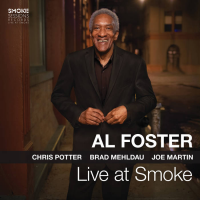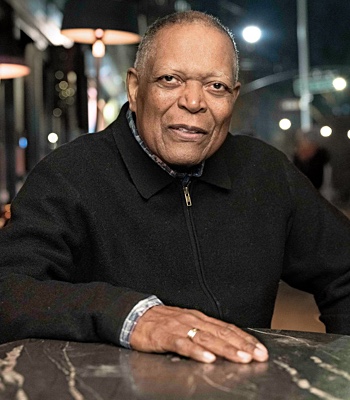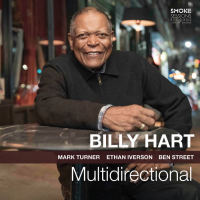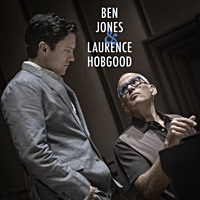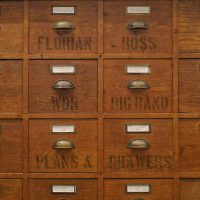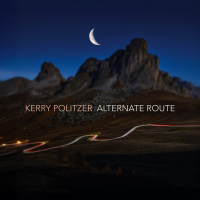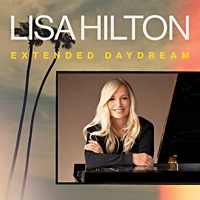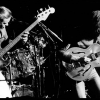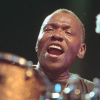Building a Jazz Library
There's more to jazz than Kenny G and Wynton Marsalis. That's why we created Building A Jazz Library. With this resource, you can home in on the players and styles essential to the past and future of jazz. Each section in this series features a brief introduction which provides some background and biographical information to shed light on each particular artist or style.
Then we list the discs. You'll find landmark material here, true high-water marks worthy of respect and attention. We recruited a special enthusiast to assemble each section in this series. These people have spent a lot of time with the subject (and probably bought way too many records to back it up). We assure you that the nuggets listed here are carefully considered and on-target. If you're new to Jazz -- or new to an artist or style -- treat Building A Jazz Library as a primer of sorts. It will provide you with enough information to step confidently into the store (or the library) and find something tasty. Or if you're a serious collector, you might just find that a few of these recommendations may fill some gaping holes on your shelf. Building A Jazz Library throws its doors wide open to all different kinds of Jazz fans and interests. Certain sounds may mesh with your particular tastes, and this series aims to bring you and the music together in perfect harmony.
So dig in, and enjoy!
Related: Essential Buying Tips for Building a Jazz Collection on a Budget.
A Jazz Reading List
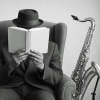
by Karl Ackermann
From 2015 through 2020, a personal research project included my reading dozens of jazz books and related media. They included mainstays such as the massive reference The Penguin Guide to Jazz Recordings (Penguin Books, 2006), Ben Ratliff's excellent interview collection The Jazz Ear: Conversations Over Music (Times Books, 2008), the off-shore perspectives of Circular Breathing: The Cultural Politics of Jazz in Britain (Duke University Press, 2005) and Blue Nippon: Authenticating Jazz in Japan (Duke University Press, 2001) and the underrecognized ...
Continue ReadingJazz Dogs: Ten Essential Dog-Eared Tunes

by Ian Patterson
Everybody's best friend. Okay, so not everyone loves dogs. But find yourself buried in an avalanche and it will be a dog that sniffs you out. The last person found alive after the World Trade Center collapsed on 9/11 was sniffed out by a rescue dog. Guide dogs helped lead their blind owners to safety from the Twin Towers following the terrorist attack. How many blind or partially sighted people around the world could manage without their trusty guide dog? ...
Continue ReadingOrnette Coleman's and Horace Silver's "Lonely Woman" — A Disambiguation
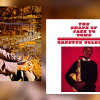
by Artur Moral
Reality is filled with confusion and misunderstandings; some are suggestive or creative, while others are disappointing or, worse, malicious. The jazz world is no stranger to the first type: specific compositions are often confused or misidentified as if they were the same. Usually, this happens because of similar melodies or titles that are sometimes identical. This last case applies to the two themes discussed here, which are homonymous but musically quite different. The first, desolate and raw, is by Ornette ...
Continue ReadingBrian Wilson Jazzed: Ten Essential Wilson Covers
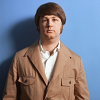
by Ian Patterson
Brian Wilson is widely hailed as one of the most significant songwriters of the 20th century--the master craftsman behind The Beach Boys' music. Inspired by rock 'n' roll, doo-wop, George Gershwin, vocal quartet The Four Freshmen and Burt Bacharach, he developed sophisticated harmonies and a signature sound that sold millions of records. His singular use of jazz-inflected harmonies, inventive chords and memorable melodies made his songs ripe for interpretation. His compositions have been covered by hundreds of pop ...
Continue ReadingPrescribing Jazz: A Top Ten

by Artur Moral
National Doctors' Day is celebrated unevenly across our mistreated planet. It is absent in most countries, while it is observed as a holiday in a few. Coinciding (in the United States and Australia) with this day of recognition for a vital profession, this article is especially directed to the entire jazz-loving medical community, focusing on six compositions related to this sector. The first four pieces will be balanced between two different renditions, while also attempting to maintain some stylistic chronology; ...
Continue ReadingGrateful Dead: Idiosyncratic Improvisationalists

by Doug Collette
As the Grateful Dead morphed from an eccentric folk-blues group into an eclectic jam juggernaut, the band adopted an idiosyncratic approach to improvisation they would then hone over three decades. Regular shifts of personnel nurtured an ongoing alteration of the Dead's musicianship, as did the growing wealth of original material the group interspersed with a wide range of cover songs. The following selections taken from the arc of the iconic unit's history illustrate how their distinctive means of playing together ...
Continue ReadingTen Terrific Sax Plus Organ Combinations

by Artur Moral
OK, maybe the electric guitar was its first and most celebrated love affair, but the organ's alliances with the saxophone's family members are undoubtedly among the richest musical combinations, both in terms of sound and the intense interrelationships that typically develop in such encounters. Whether it be a tenor with a Hammond, a soprano with an electronic keyboard or a baritone with a pipe organ, we are facing the alloy of two musical devices that are exceptionally equipped for maximum ...
Continue ReadingJoni Mitchell Jazzed: Ten Essential Mitchell Covers

by Ian Patterson
Canadian singer-songwriter Joni Mitchell's spectacular transition from acoustic folk singer in the '60s through folk-rock 'n' roller in the early '70s to leader of jazz-inflected bands in the mid-'70s was a gradual process. This musical transformation can be traced over the course of five albums for Asylum, beginning with the multi-million seller and Grammy-winner Court and Spark ( 1974). The biggest stepping-stone came with The Hissing of Summer Lawns (1975), followed in remarkably quick succession by Hejira ( ...
Continue ReadingJazz on Soul, Pop, Rock, Folk, and other intangible territories - Part 2

by Artur Moral
Part 1 | Part 2 James Carter soloing on a song by Sting? A prolific French guitarist and producer, approaching his thousandth album, deconstructing one of Billy Joel's most candid love songs? A Spanish trumpeter translating the Bee Gees into the jazz language? Yes, all this will happen in this second installment of a series that insists on finding the most surprising versions of songs born in external demarcations, with absolutely no exclusions: our only frontier will be ...
Continue ReadingTop Ten Sci-Fi Jazz Albums

by Chris May
On The Launch Pad Robert Frosch, head honcho at the National Aeronautics and Space Administration from 1977 to 1981, wrote that at cocktail parties he was sometimes asked whether NASA had some gizmo or other that had recently been brought to fictional life in a sci-fi book or movie. If Frosch's answer was “No," the next question was usually, “Are you going to get one?" To which Frosch's answer, a truthful one, was often, “We're working on it."
Continue Reading

